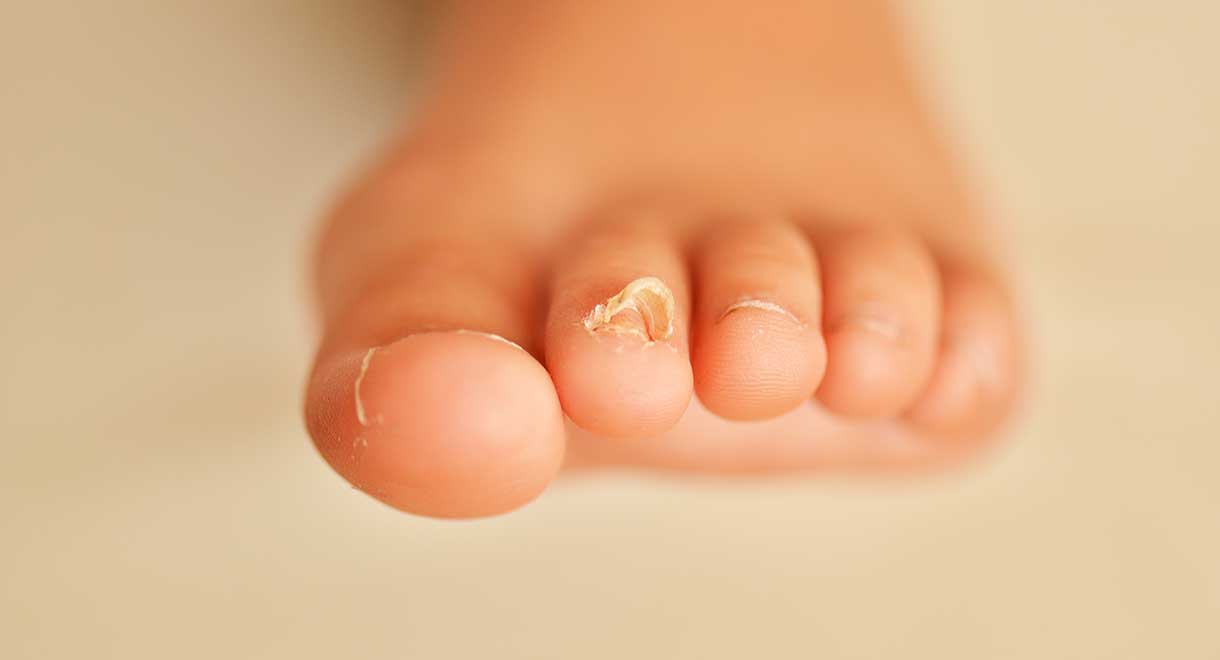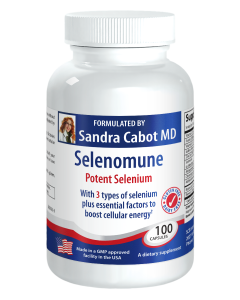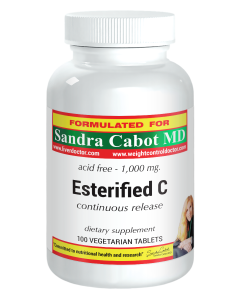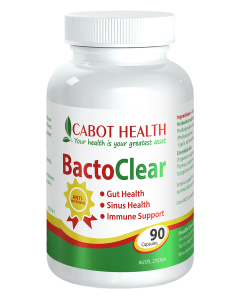

Fungal Toe Nails – A Safe Cure
I see a lot of patients with chronic fungal infections of their toe nails and they really do look unattractive. Fungal toenails are a very common problem and affect around 10% of the world’s population. So, if you think your nails have a fungus you may well be right! Fortunately, there’s a lot that can be done about the problem.
It is very important to strengthen your immune system if you want to overcome a fungal nail infection and prevent it from returning.
Fungal infection of the toenail is called Onychomycosis. It is not uncommon for doctors to prescribe potent anti-fungal drugs to eradicate the fungus but this is not without risk. I never prescribe anti-fungal drugs, except for nystatin, which is harmless and is used to treat oral and intestinal candida. Unfortunately, nystatin does not eradicate the fungus which infects toe nail beds.
For quite some time now I have been recommending copper sulfate to treat toenail fungus. It's cheap, easy to use, and works like a charm. However, if you are allergic to sulfur or sulfur drugs - don't use copper sulfate. Furthermore, if any burning occurs - discontinue immediately and rinse off.
How to use it: Put one tablespoon of copper sulfate in a bucket with enough water to cover your toes. Soak them for 10 minutes every day for about 7 days. Your feet will turn blue, and your nails will turn a dark brown/black. This is when you can stop the soaking. Once the nail is dead it will grow back clean. It takes several months to regrow your nail.
Copper Sulfate can be found at the pharmacy or the animal stock feed store (and is a lot cheaper at the feed store). It works by killing the fungus - if you have fish, you already know this, as it is often used to kill off the fungus in the bowl.
How do fungal toe nails look?
- Yellow or brown discolored nails
- Worm eaten
- Brittle or crumbling
- Overly thickened
Fungal nails can be unsightly and embarrassing. Often described as “rotten nails”, patients may describe their nails as varying in color, from a yellow through to a brown discoloration. The nail may also look like it is thickened or even eaten away.
Treatment to date has been limited with only expensive but often ineffective nail paints or prescription only heavy duty oral medication, which while effective, take a long time to work, and can have significant and sometimes very serious side effects for many people.
Laser therapy
Laser therapy is a new and highly effective treatment for this embarrassing problem.
Why choose laser therapy?
- Highly effective
- Fast result
- Safe – no side effects
- No anaesthetic required
- Comfortable with minimal discomfort
- Nail polish can be applied immediately after you leave
- No need to take medication
While often many patients try to avoid treatment hoping home remedies or nail paints and lacquers will work, on most occasions early treatment is the best for a successful outcome. The first signs of nail fungus include small white patches appearing on the nails or a yellow discoloration developing in the nail. When these signs begin to occur the best thing you can do is seek treatment early.
Early treatment will cut recovery time, meaning your nails will return to a healthy clear look earlier. It also is easier and increases your chances of a quick and successful recovery.
Laser |
Other treatments |
| No Anaesthetic | Removal of nail – Requiring sutures (stitches) |
| No side effect | Many Medications have significant side effects such as liver function concerns.
Many Patients suffer allergies to medication. |
| Fast | Nail paints and oral medication often take 12 -18 months to show effective results. |
| Effective reliable results
Success as high as 80% + plus |
Many nail paints have a very low success rate as low as 10%. |
| Time efficient | Treatment is completed in an effective 60-minute time slot. |
How does laser work?
When your nails are infected with fungus, not only is the fungus alive and living in and on your nails, but it is also breeding. The “eggs” of a fungus are called spores and they are not visible to the naked eye.
The spores (eggs) are very strong and despite numerous potions, creams and paints, on most occasions they do very little to kill the spores of the fungus living in your nail.
Laser treatment passes a beam of laser light at very high spectrum over the infected area. This laser heats the inside of the nail and the tissue underneath, gently raising the temperature to between 45 and 50 degrees Celsius. This kills both the fungus and its spores or eggs that are in and around the nail. This laser is specially calibrated to kill both the fungus and its spores.
The laser is safe and painless and takes approximately 30 to 45 minutes to treat all 10 toe nails. There is no need for anaesthetic injections or surgery.
Treatments for nail fungus will kill the fungus and its spores immediately. However, the nail will take a number of weeks or even months to grow out and become completely healthy and clear again. It’s important to undertake this treatment as soon as possible.
Fungal nails will not go away by themselves! Friends often advise home remedies and quick fixes that do not work. Often, pharmacy creams and nail paints are difficult to use and many times can be highly unsuccessful.
Laser treatment is highly effective with minimal discomfort and is safe and effective!
Oral prescription medications
Drugs used to treat fungal toe nails are Griseofulvin and Fluconazole and they need to be taken for at least 6 months. These drugs can be highly toxic to your liver, bone marrow and nervous system and, in my opinion, their risks do not justify their use for fungal toe nails. Their use should be reserved for serious systemic fungal infections of the body.
I am often surprised by how trusting patients can be when they are prescribed long term anti-fungal drugs, antibiotics and statins, or other liver toxic drugs – they rarely check side effects before committing to take these drugs long term, and they can get a nasty surprise! They may take months to get over the side effects and repair any liver damage.
Help your immune system
Fungal nail infections can be a sign of a weak immune system, so have a blood test to check a full blood count, blood sugar and liver and kidney function. The part of the immune system that fights fungal organisms is known as the cellular immune system, and it needs to be healthy or the fungal infections may recur after taking drugs or using laser.
You may also have other fungal infections in your intestines, respiratory tract or skin, especially if you have had to take antibiotic drugs or steroids for health problems in the past. These fungal infections can release toxins in the body and this makes you feel tired. Your skin may be itchy with red blotches and rashes, or have white and pink patches, and this can signal that the fungus is alive in your skin.
To help your immune system fight chronic fungal infection take Selenomune one capsule daily. Over 3 to 4 months of taking Selenomune, you will notice that the fungal infection gradually reduces a lot. It will also help you to fight other chronic viral or fungal infections.
You can also take vitamin C in a dose of 1000mg daily and use natural antibiotic herbs in your diet such as fresh (raw) rosemary, oregano, mint and thyme – they taste nice in salads and rosemary goes well with roast meat. People with fungal nail infections often have an overgrowth of fungus in their intestines. If this is the case, Bacto Clear capsules can help.
The above statements have not been evaluated by the FDA and are not intended to diagnose, treat or cure any disease.
Know someone who might benefit from this article? Share it!
26 Comments
Need Help?
1-888-75-LIVER
Monday to Friday, 9:00 am to 5:00 pm MST
100%
Satisfaction Guaranteed
If it’s faulty or wrongly described, we’ll replace it.














If you refer back to the how to use it section:
How to use it: Put one tablespoon of copper sulfate in a bucket with enough water to cover your toes. Soak them for 10 minutes every day for about 7 days. Your feet will turn blue, and your nails will turn a dark brown/black. This is when you can stop the soaking. Once the nail is dead it will grow back clean. It takes several months to regrow your nail.
You will see that if you dilute it enough it is safe to use. I imagine this warning only applies if you use it on your skin at full strength.
Kind regards,
Jessah Shaw
Nutritionist
The protocol in the article says to do it for 7 days so we expect to see further changes in the coming days.
Although your nails have not yet changed color it may take even more than the 7 days for them to die and be sloughed off before another healthy nail regrows.
Kind regards
Victoria
Naturopath for Dr Sandra Cabot MD
Our suggestion is to speak to a Podiatrist about Laser Therapy for your fungal infection.
If you choose the copper solution we recommend 1 teaspoon/liter of water, but please understand that you are likely to lose the nails and this will result in the slow and potentially painful regrowing of the nail that can be several months.
Strengthening the immune system is an important strategy to reduce the likelihood of the fungus returning.
Dr Cabot prescribes Selenium and NAC.
Avoid a high carbohydrate diet, and processed foods which provide a copious amount of sugar that is food for fungus like Candida that feast on high sugar in the blood.
Kind regards
Victoria
Naturopath for Dr Sandra Cabot MD
The compound you have found is what Dr Cabot recommends.
Make up the solution as it says in the article and follow the instructions, although you can reduce the amount made up because you only have to treat 1 nail.
We recommend you only treat the affected nail, because the solution will kill any nail subjected to the treatment.
Dr Cabot recommends a low sugar/carbohydrate diet to reduce the likelihood of the fungus returning, and to begin taking
Selenomune Designer Energy - 1 capsule daily to increase your selenium levels to help boost your immune system to stop the fungal infection returning.
Kind regards
Victoria
We don't have any additional information, but this article might interest you:
https://www.ncbi.nlm.nih.gov/pmc/articles/PMC4556990/
Kind regards,
Louise
You should be able to get it from a hardware store, or online.
Perhaps you could try laser therapy.
Laser treatment passes a beam of laser light at very high spectrum over the infected area. The laser heats the inside of the nail and the tissue underneath gently raising the temperature to between 45 and 50 degrees. This kills both the fungus and its spores or eggs that are in and around the nail.
Treatments for nail fungus will kill the fungus and its spores immediately. However, the nail will take a number of weeks or even months to grow out and become completely healthy and clear again.
Kind Regards,
Jessah Robinson
Nutritional Consultant for Liverdoctor.com
We recommend you see your healthcare practitioner for his advice.
Kind Regards,
Jessah Robinson
Nutritional Consultant for Liverdoctor.com
Have you had a liver function test?
A fungal toenail infection can be a sign of a weak immune system. Please ensure that if you wearing socks and shoes all the time can make the infection worse as they thrive in this environment. Perhaps you would benefit from the copper sulfate treatment or laser therapy as mentioned in the article.
We recommend you take
Selenomune 1 cap twice daily for one month to help your cellular immune system and afterwards one cap daily to maintain a strong immune system.
This can be purchased here:http://shop.liverdoctor.com/selenomune-designer-energy-100-capsules.html
Kind Regards,
Jessah Robinson
Nutritional Consultant for Liverdoctor.com
greatest I have found out till now. But, what concerning the bottom line?
Are you sure about the supply?
Just letting you know that what you are referring to is a mandatory requirement in the USA for all vitamins and supplements.
Kind Regards,
Jessah Robinson
Nutritional Consultant for Liverdoctor.com
Is this an article by a ghost writer - made to appear as written by Dr Cabot?